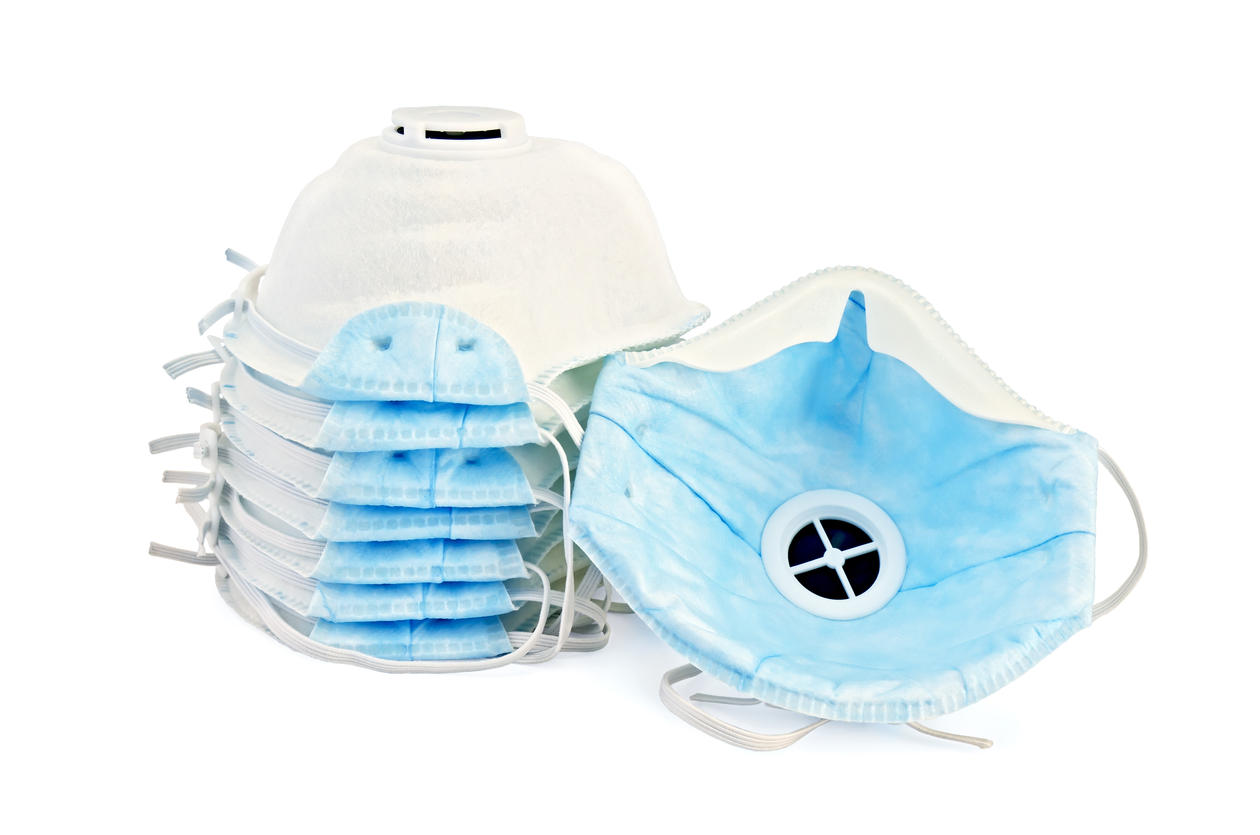Respiratory protective equipment
There are many different types of respiratory protective equipment, depending on what type of pollutants you want to protect against.
Main content
There are many different types of respiratory protective equipment, depending on what they will protect against. Examples of pollutants are
- Dust and smoke
- Gases and vapours
- Aerosols
- Biological factors
- Nano materials
The type of respiratory protective equipment that is required shall be specified in section 8 of the material safety data sheet.
Training in correct use of respiratory protective equipment is important for being able to work in a good and safe way. You should choose a type of respiratory protective equipment that is a good fit for the shape of the face. Facial hair will prevent the mask from sitting tightly on the face. Mouth movements will also increase the risk of leakage.
A gauze mask is not respiratory protective equipment, but protects the patient against droplet infection. To a lesser extent, a gauze mask may also protect against spurts, particles and gases.
There are two main types of respiratory protective equipment: those with a filter and those supplied by air (compressed air/motor-driven).
Respiratory protective equipment with a filter
Respiratory protective equipment with a filter may be used as long as there is a suitable filter and the pollutant concentration is not too high. There are half face masks, full face masks and visors with or without hoods. Half face masks or particle filter masks are the most common types at UiB. Half face mask type P2 is used when working with experimental animals. The filter should be changed when it is difficult to breathe through.
Particle filter
Particle filter masks are divided into P1, P2 and P3. P3 gives the highest protection. See the table below from the Norwegian Labour Inspection Authority
Filter-class | Filtering effectiveness | Protects against | Comments, some examples |
P1 | Low |
Solid particles
|
Used only if the dust is harmless |
P2 | Middle | Solid particles and liquid particles | Protects against most types of dust from low toxicity substances. For example drilling in mountains or in mines, sweeping chimneys, sanding work, insulation work |
P3 | High |
| Used when the dust contains or may contain toxic or very toxic particles, carcinogenic substances, radioactive particles, bacteria, viruses, nano materials. |
A half or full face filter mask can also have a combination filter. In addition to a particle filter this type also has a gas filter.
Gas filter
The table shows colour and letter codes for the type of gas that the filter offers protection against. A filter may have a combination of colours, in addition gas filters and particle filters are often combined.
Brown | A | Organic gases and vapours with boiling points above 65C, e.g. solvents |
Brown | AX | Organic gases and vapours with boiling points of 65C or below, limited useful life |
Grey | B | Inorganic gases and vapours, e.g. chlorine, hydrocyanic acid, sulphuric acid |
Yellow | E | Acid gases, e.g. sulphur dioxide, hydrofluoric acid |
Green | K | Ammonia and certain amines |
Red | HG | Mercury, limited useful life |
The filter should be changed when it is difficult to breathe through. Always write on the gas filters the date when they were first used. Gas filters are stored closed. They last for 2 months from the date of first use, even if use has been limited. If you notice a chemical smell through the filter - immediately switch the filter.
Supplied air respiratory protective equipment
Supplied air respirators are rarely used at UiB. In case you do not know as to which gases you can be exposed to, supplied air respirators gives full protection. The person breaths compressed air from an air bottle on his back, or from a pressure hose connected to the respirator. The air must be approved according to "norsk standard".
Supplied air respiratory protective equipment is important personal protective equipment when
- It is not possible to use fume cupboards
- The work is heavy or prolonged
- The pollutants come in high concentrations, compressed air is used
- Unknown composition of concentration of pollutants, compressed air is used
- If there is not a suitable filter or masks, compressed air is used
- In the case of oxygen deficiency (less than 19.5%), compressed air is used
